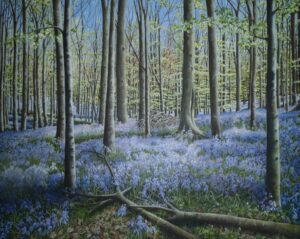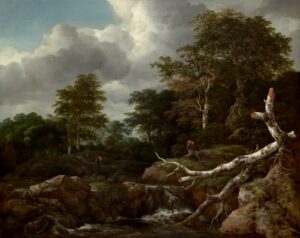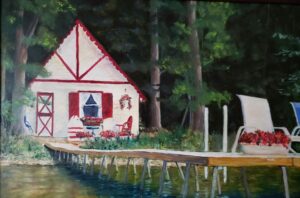I painted my first tree at age 12 and continued to paint landscapes for the next few decades. But I have never liked my trees. Eventually, I switched to figurative work although I love plein air painting. I still do not like my trees. I agonize about painting trees. Give me a portrait to paint, no problem. But I lose my confidence when it comes to trees.
I recently read an article by C.J. Trent about blocks faced by all sorts of creative people. Trent wrote that blocks happen for many reasons, including that “you may face an impasse because you need to learn a technique or change your method, or find a new material to realize your vision.” This common sense view aligned with Edgar Payne’s advice: “a painter needs to study, mediate, experiment, and practice interminably.” This past January, I decided to spend a year studying how to paint trees and painting trees. I give myself a “B” for effort and a “C” for results. I still have half the year to go, so I am cautiously optimistic.
For the study part, I gathered all my books on landscaping painting and turned to John Carlson who devoted a whole chapter to painting trees. He says it takes study and time and counsels the student to first understand trees, then to draw them, before attempting to paint them. That works for me.
I have listened to some very thoughtful people speak about painting trees. At a gathering of local artists one evening, an artist remarked that it was easy to draw trees as symbols rather than as living creatures. Only by really seeing them can you draw them so they look real. It reminded me of the difference between stick figures and more realistic figure drawing. Trees are not symmetrical; they should have the same feel of gesture as a figure. A friend mentioned to me that drawing branches should be like drawing fingers on a figure. Carlson instructed artists that a painter can paint her trees anyway she wants and that the less they look like anyone else’s the happier she should be.
For the practice part, I have been drawing trees and painting trees. I have worked on value, color, gesture, and structure. What have I learned?
Brushwork counts. A flick of a brush yields the suggestion of leaves dancing in the wind. Branches need to taper and turn as they snake through the sky, calling for confident brushwork. Trees call for a balance between abstraction and realism; detail and suggestion. And I have learned that Carlson is right. Painting trees is as individual as painting figures.

A friend of mine, Kathy Nolan Hutchins, paints beautiful trees and forests. She exalts in detail and creates a sense of peace and beauty in her work. For example, look at her piece, “Belgium Woods.”
I would recognize her trees anywhere.
In contrast, so many of the early great landscape artists, like Ruisdael, only suggested detail in their trees. Their spare use of color and value gives an illusion of detail and depth. These early artists excelled at creating atmosphere. I can study these painters for hours.

Widener Collection 1942.9.80
I have read lots of rules about painting trees. I am not much of a rule person so they are fun to read but I am not going to follow them blindly. I think the only “rule” that I follow is to make my own greens instead of using color straight out of the tube. I have painted trees that I like. For instance, I painted our boathouse which is on a beach surrounded by a thick stand of trees. Most of the trees in this picture are just suggested.
Trees are majestic but the landscape paintings I like the best rarely show an entire tree painted in a realistic fashion. Instead, trees create the mood of the painting. So while I think trees need to be painted in a way that shows life and rhyme, I do not want to paint them so realistically that they capture the landscape painting. Instead, to me, trees are magic; in themselves, and in paintings.

Oil on Panel
References:
Edgar Payne, Composition of Outdoor Painting, 1941.
John Carlson, Carlson’s Guide to Landscape Painting, Dover, 1973.C. J. Trent, ”Breaking through the Block,” Artist’s Magazine, July/August 2019
Leave a Reply